The global market for Asian art has gone from strength to strength in the past year. In May Christie’s achieved its highest ever total for a sale of contemporary Asian art, which reached just over $128m. The sale’s top lot, 14.12.59 by Zao Wou-Ki, more than doubled its estimate to fetch $22.6m.
With London still the centre of the world’s trade in Asian art, and the most internationally focused of all the world’s art capitals, the city’s dealers are set to reap the rewards of the ongoing boom in the field. Accordingly, this year, Asian Art in London (AAL; 1–10 November), the event dedicated to promoting London dealers and auction houses, is looking stronger than ever.
The ambitious programme includes the usual exciting range of symposia, lectures and seminars. Complementing these are a series of guided gallery hops. The exceptionally varied range of events coinciding with AAL even includes an intriguing exhibition devoted to North Korean art. More than 50 works owned by the Song family will be on display at the Mall Galleries in the show ‘North Korea: Natural Beauty’. As the co-curator Teresa Song puts it, ‘With this exhibition, we hope to bring to light the wealth of talent and diversity in North Korea through a non-political lens and in doing so, attract a new audience for and interest in the artistic and cultural landscape of the DPRK.’
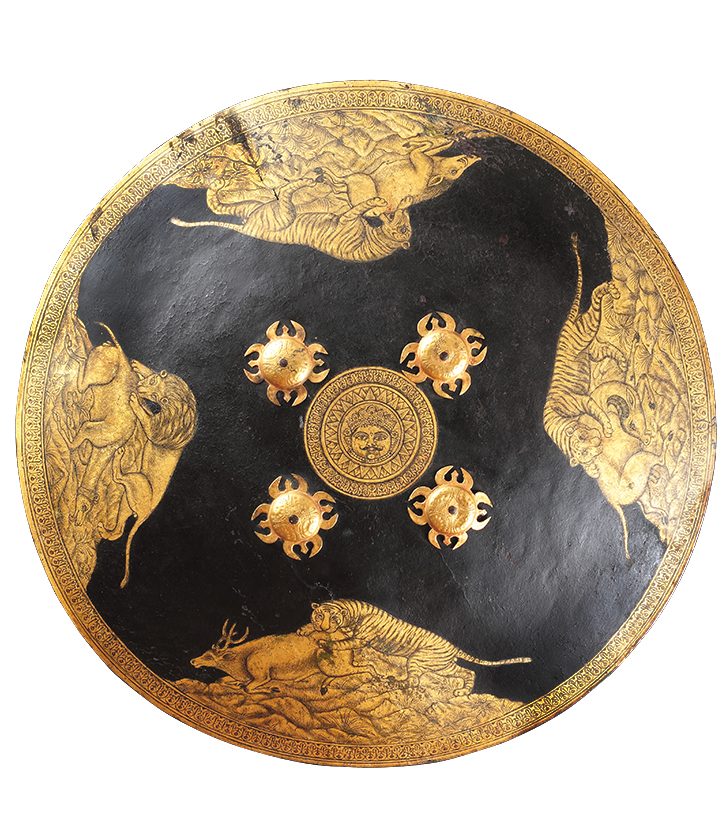
Dhal Shield (late 18th century), Mewar (Udaipur), Rajasthan, India. Runjeet Singh (price on application)
In keeping with the broad approach of this year’s edition of AAL, South Asia and South East Asia are well represented. Warwickshire-based Runjeet Singh will be presenting a show on Ryder Street: ‘The Goddess: Arms and Armour of the Rajputs’, a highlight of which will be a late 18th-century leather shield from Mewar in Rajasthan, painted with the royal insignia and four depictions of lions and tigers attacking animals on the circumference. At Peter Finer there are more arms from the subcontinent in the form of a Mughal dagger from the mid 17th century, and a scabbard from the 19th century. And at Asia House, look out for a performance by the singer-songwriter and Sarangi-player Amrit Kaur Lohia, titled ‘Eternally Displaced: Soundscapes from India’ (30 October).
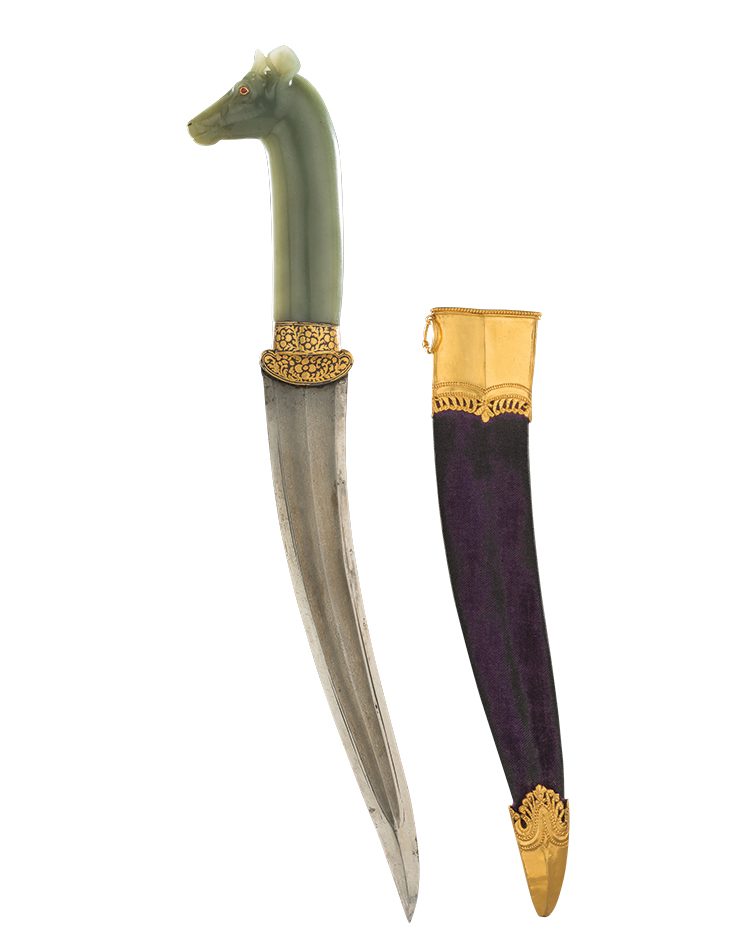
Dagger (khankjar), mid 17th century, Mughal, India. Peter Finer (price on application)
Proof of AAL’s ongoing appeal is the participation of overseas dealerships. New York-based Raquelle Azran Vietnamese Contemporary Fine Art is organising ‘Indochine Scenes: Vietnamese and French Paintings from the 1900s’, which will be on view at Guy Peppiatt/Stephen Ongpin Gallery in Mason’s Yard. Azran says, ‘It is intended to offer a glimpse into the fascinating world of Indochine, where French and Vietnamese artists forged the basis for contemporary Vietnamese fine art.’ On show will be works by French peintres voyageurs (painter-travellers), and a selection of mid-century Vietnamese paintings, including works by artists such as Le Pho and Luu Cong Nhan.
London’s oldest Asian art dealership, Sydney L. Moss (founded in 1910) is putting on a playful Halloween-themed show, ‘Devils, Demons and Bakemono’, which delves into the dark side of Japanese folklore, presenting lacquer work, pipecases, inro and netsuke. Georgia Leach, a specialist at the dealer, says, ‘We love folklore and telling stories here. This show gives us the chance to showcase some of our stuff that the public never gets to see.’
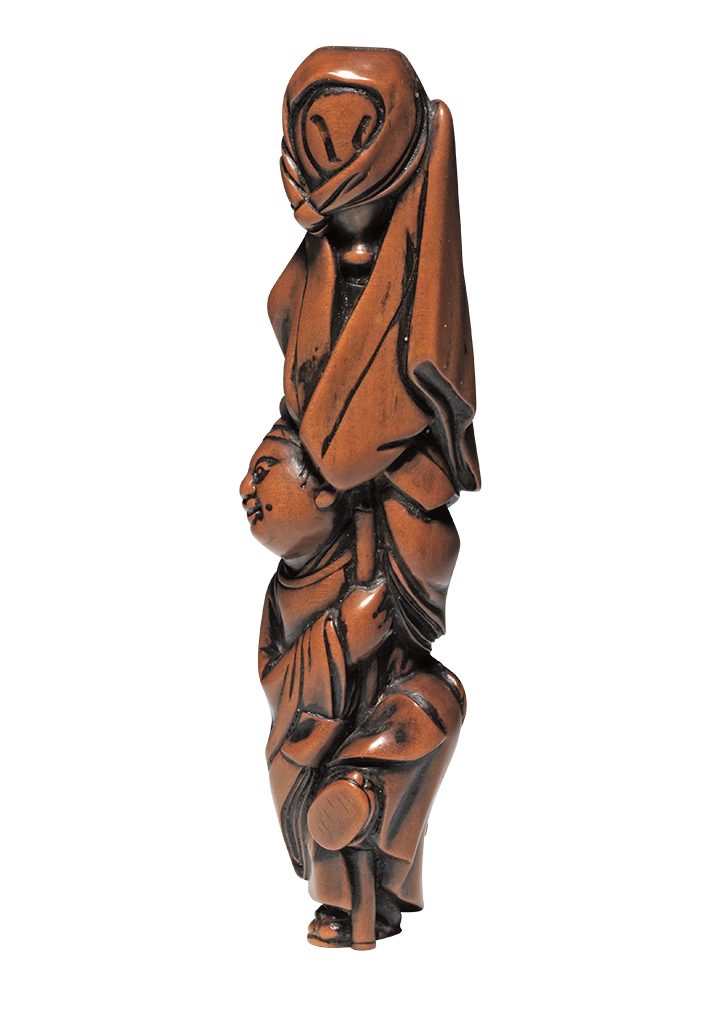
Netsuke of a boy and a sake ghost (c. 1800), unsigned, Osaka. Sydney L. Moss (£27,500)
Basel-based gallery, Bachmann Eckenstein Japanese Art, run by Thomas Bachmann and Gabriel Eckenstein, will be sharing a space at Gallery 8 in Duke Street with two other dealers of Japanese art, Simon Pilling and Hanga Ten. Thomas Bachmann says, ‘When AAL started 21 years ago we always planned to participate but, in the early years, it was a London-dealers-only event. After AAL opened up to overseas dealers, we thought “Let’s do it.”’ Highlights of the Bachmann Eckenstein exhibition, titled ‘Japan Eccentrics’, include an Edo period glazed ceramic sake flask. The flask has been repaired using the kintsugi technique in which patches, made from the sherds of another vessel, are grafted with lacquer to the shattered original.
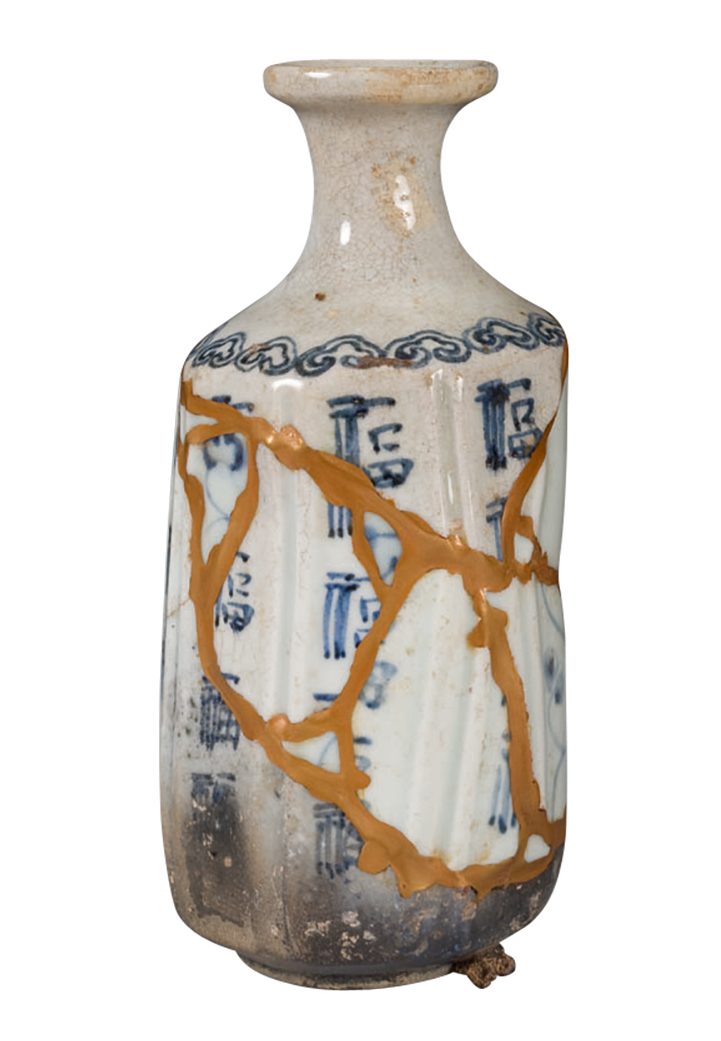
Sake flask (tokkuri) (17th century), Japan. Bachmann Eckenstein Japanese Art (£4,500)
This year’s event seems to offer further proof of a revival of interest in Japanese art. Sotheby’s is testing the market with its 6 November sale of Fine Japanese Art – the house’s first dedicated London auction of Japanese art in more than 10 years. The star lot of the Japanese sale is an exquisite 16th-century portable shrine, the hinged doors of which open to reveal an inner frame containing an oil painting of Christ (estimate £70,000–£100,000).
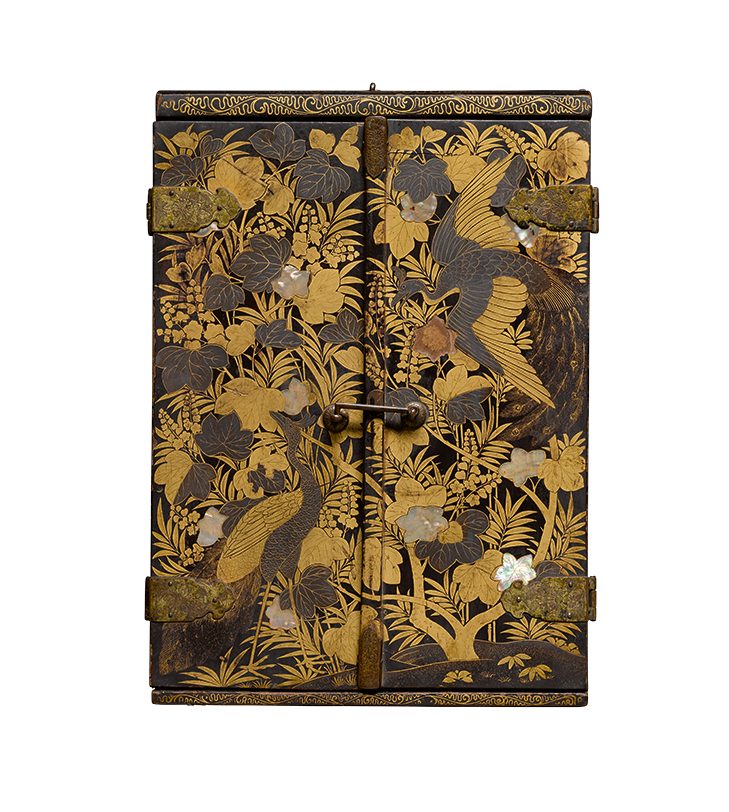
Portable shrine (16th century), Japan. Sotheby’s (£70,000–£100,000)
Since Sotheby’s closed its Japanese department in 2007, it has been Bonhams that has championed Japanese art in the auction world. Suzannah Yip, head of Japanese Art at Bonhams, says, ‘The market for Japanese art is very strong in London. The quality of the workmanship is unmatched. It’s one of the only areas of Asian art that is still really undervalued, with huge gaps between estimates and prices achieved. Conventional valuation doesn’t reflect the intrinsic value of the craft.’ On 6 November, Bonhams will be holding a sale called The Julius and Arlette Katchen Collection of Fine Netsuke: Part III. The sale dedicated to netsuke will be followed by the 8 November sale of Fine Japanese Art that will include a rare silver gilt sculpture of a dragon ascending Mount Fuji (estimate up to £50,000).
One of the reasons for London’s primacy in the market for Asian art is its proximity to world-class centres of research. Coinciding with AAL, in Oxford this year, St Hugh’s College will host an exhibition devoted to Michael Alphonsus Shen Fuzong, the first Chinese visitor to England known by name (8 October–14 December). It will look at the six weeks Shen spent in Oxford as the guest of Thomas Hyde, Bodley’s Librarian, and includes Sir Godfrey Kneller’s life-size portrait of Shen, which was commissioned by James II in 1687, and is still part of the Royal Collection.
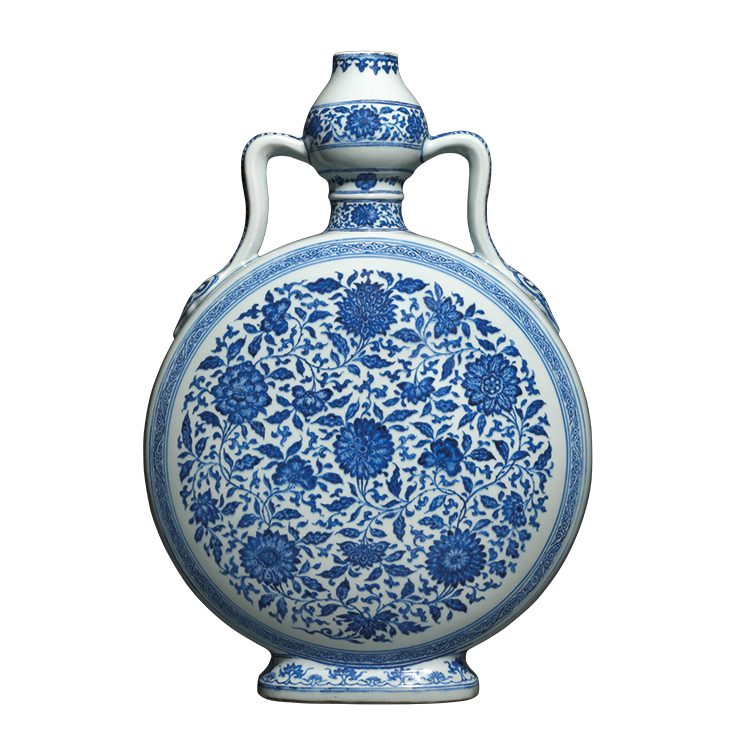
Moonflask (bianhu) (1725–35), China. Christie’s London (£1.2m–£1.5m)
Chinese art occupies its usual prominent place in proceedings. Christie’s will be offering a selection of traditional Chinese artefacts at its sale of Fine Chinese Ceramics and Works of Art on 6 November, which includes a superlative large, blue-and-white Ming-style moonflask (estimate £1.2m–£1.5m). And Bonhams will be offering The Ollivier Collection of Early Chinese Art, featuring a stunning bronze ritual tripod wine vessel from the Zhou Dynasty (estimated at £300,000–£500,000).
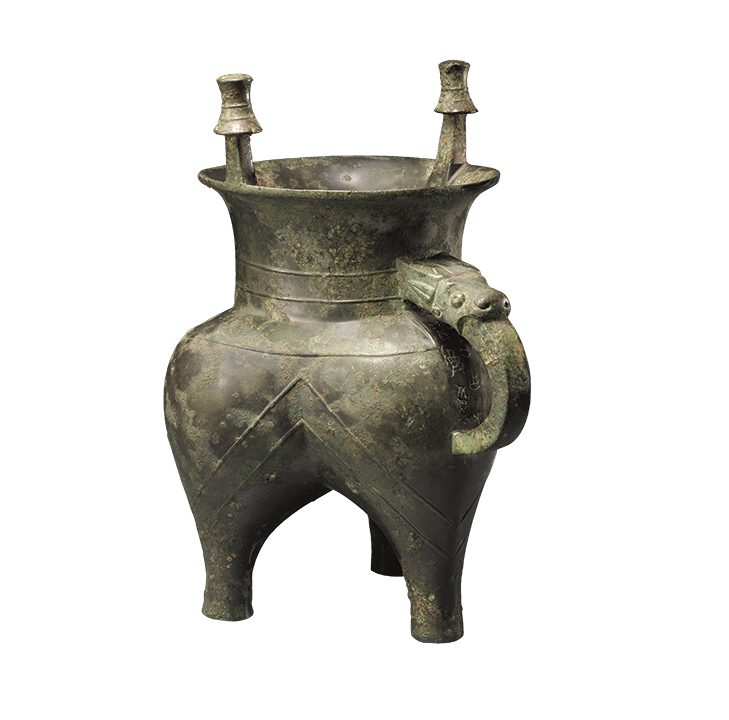
Ritual tripod wine vessel (Jia), early Western Zhou dynasty (c. 1046–771), China. Bonhams (£300,000–£500,000)
Jorge Welsh Works of Art, specialists in Chinese export porcelain and cross-cultural works of art from Africa, India, China and Japan, will be showing ‘Through Distant Eyes: Portraiture in Chinese Export Art’, which includes an exquisite Qing dynasty porcelain punch bowl bearing a portrait of Fanny Murray (c. 1765–70).
This year as buyers flock from around the world for Asian Art in London, the range and quality on offer confirms not only London’s passion for and expertise in Asian art, but also its continued place at the heart of the global art market.
Asian Art in London takes place at various venues from 1–10 November.
From the November issue of Apollo. Preview and subscribe here.
Unlimited access from just $16 every 3 months
Subscribe to get unlimited and exclusive access to the top art stories, interviews and exhibition reviews.

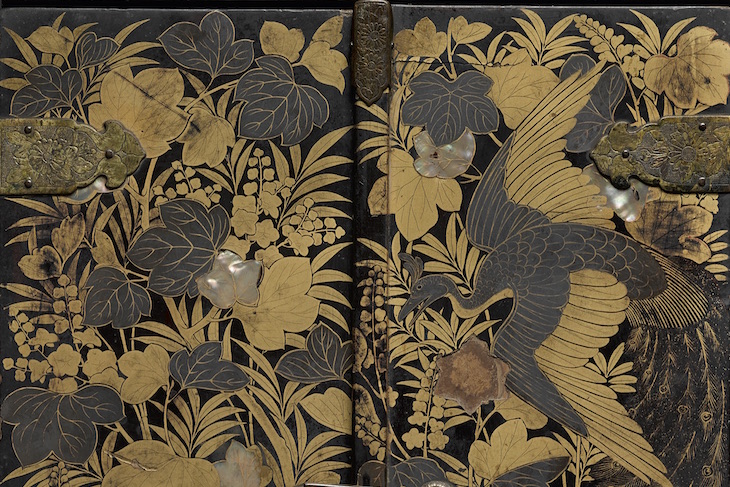
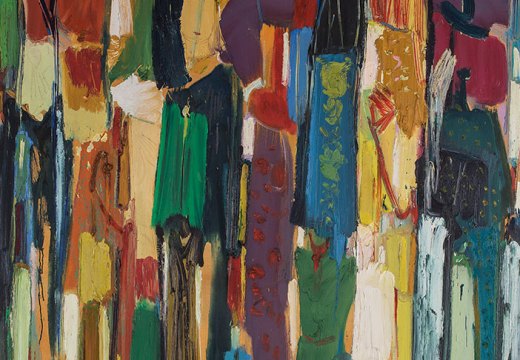
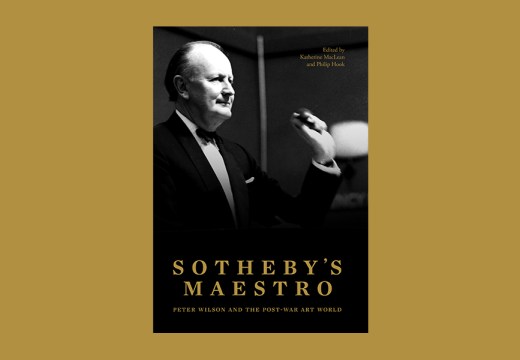
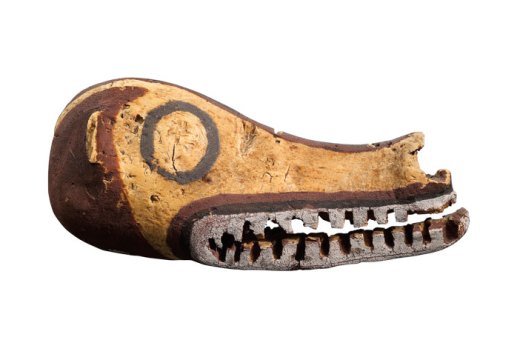









![Masterpiece [Re]discovery 2022. Photo: Ben Fisher Photography, courtesy of Masterpiece London](http://www.apollo-magazine.com/wp-content/uploads/2022/07/MPL2022_4263.jpg)
It’s time for the government of London to return to its rightful home